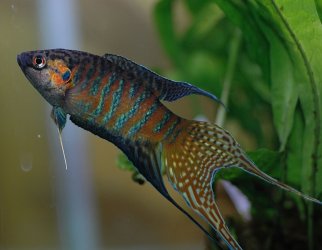The what now?The Peruvian monkey eating fire dragon fish
🌟 Exclusive Amazon Black Friday Deals 2024 🌟
Don’t miss out on the best deals of the season! Shop now 🎁
You are using an out of date browser. It may not display this or other websites correctly.
You should upgrade or use an alternative browser.
You should upgrade or use an alternative browser.
Rare Fish's Rare Fish of the Day!
- Thread starter I Like Rare Fish
- Start date
Anonymous Fox
Fish Addict
They’re really cuteWe’ll kick day #6 off with a Nano fresh, brackish, and saltwater blenny!
Day #6 (11/10/21
Top Hat Blenny
Omobranchus fasciolatoceps
View attachment 147543
Size: rarely exceed 2.5”
pH: 7.0-8.5
Tank size (in gallons): 20g
Country of origin: Southern Japan, Hong Kong, and Taiwan
Diet: Insects and Crustaceans (a micro-predator). In captivity, they will accept most frozen food
Temperament: Peaceful but territorial
Nitrate: <30ppm
Salinity: 0-20 (does best in 0-15)
Fished for: No
Status: Least Concern
Harmful to humans: Harmless
Description:
This is one of the few species of Combtooth Blenny that inhabit fish and brackish water. They inhabit estuaries and mangrove forests, but most are collected in slightly brackish to freshwater areas. There have been a few records of breeding. They are substrate spawners, and larvae are planktonic. Read about the breeding on my first recourse. They are often marketed as ‘freshwater blennies’. These fish are hardy, and will survive through tough shipments, cold temperatures, and more.
Where you can find them:
As always, aqua-imports has them. Specialty saltwater stores may have them, but those will be collected in fully saltwater or high brackish areas.

Top Hat Blenny (Omobranchus fasciolatoceps)
Originating from the coastal waters of Western India and Bangladesh, the Indian Zebra Blenny is one of a very few species of Blenny thatwww.aqua-imports.com
Recourses:
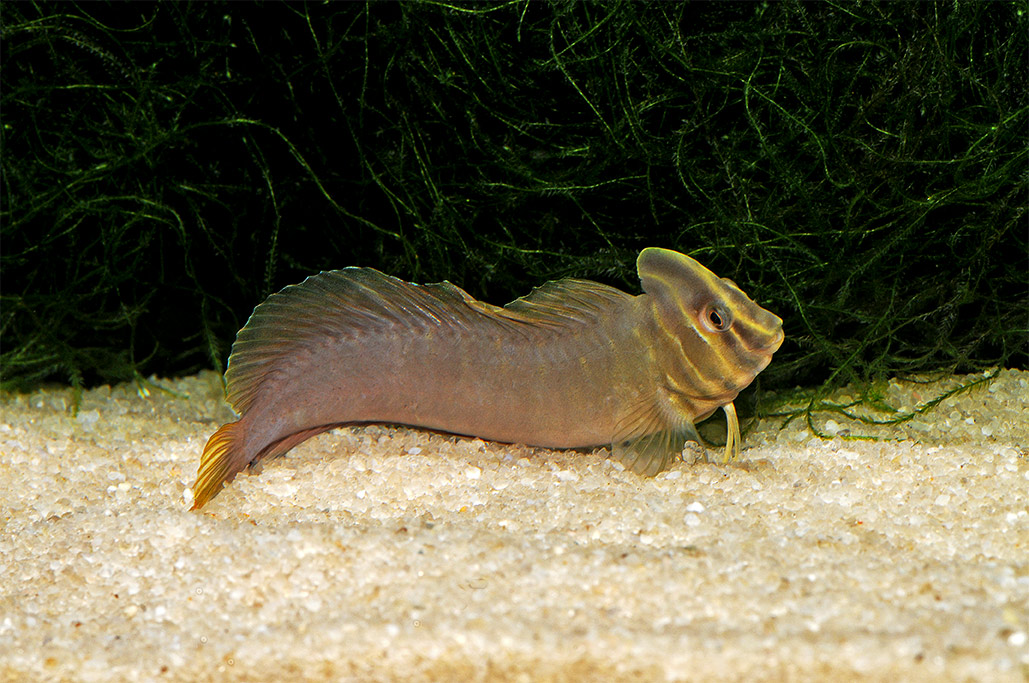
First Captive Breeding of the "Freshwater" Top Hat Blenny - AMAZONAS Magazine
Pei-Sheng Chiu, an assistant researcher at the Mariculture Research Center, Fisheries Research Institute, Taiwan, documents the captive spawning & rearing of this species known for very "flexible" salinity requirements.www.amazonasmagazine.com

Omobranchus fasciolatoceps - Wikipedia
en.wikipedia.org

Omobranchus fasciolatoceps summary page
www.fishbase.se
Top Hat Blenny (Omobranchus fasciolatoceps)
Originating from the coastal waters of Western India and Bangladesh, the Indian Zebra Blenny is one of a very few species of Blenny thatwww.aqua-imports.com
Very close.The Peruvian monkey eating fire dragon fish
You have never heard of the PMEFDF. Well ILRF might enlighten you, watch this space.The what now?
its not a real fish...You have never heard of the PMEFDF. Well ILRF might enlighten you, watch this space.
They say only about half of all the species in the amazon have been discovered so far.its not a real fish...
ClownLurch
Fish Gatherer
Any small (under 2”/50mm) fish that live in very hard water? There’s a lot of us would welcome suggestions as there’s been a few lists posted when liquid rock newbies start asking for suggestions.
ClownLurch
Fish Gatherer
Talk about coincidences! I think the cats just brought one in from the neighbours pond! I’ll just get a pic……….too late he’s thrown it into the frying pan. Smells nice mind you……its not a real fish...
Didn’t have time for yesterday. I’ll have 2 out today.
Cant wait!!Didn’t have time for yesterday. I’ll have 2 out today.
Making em right now early in the day!
@itiwhetu ‘s guess was quite close. But it was not that fish. This is a true monster fish that I don’t expect anybody to keep besides people who want to spend 100’s of thousands of dollars on fish. Ladies and gentlemen and everybody in between, I present to you, the Aripaima Gigas!
Day #8 (11/12/21)
Aripaima (Pirarucu)
Aripaima gigas

Size: Doesn’t normally exceed 7 feet in captivity
pH: 6.0-6.7
Tank size (in gallons): pffffff take a guess!
Country of origin: Bolivia, Brazil, Guyana, Peru. However, in Bolivia, they are considered an invasive species
Diet: Will accept frozen, can be weaned on pellets (but don’t count on it). They are fish eaters and should be fed a large amount of fish.
Temperament: Peaceful to fish not able to fit in its mouth
Nitrate: <30ppm
Salinity: N/A
Fished for: Yes
Status: Data Deficiency - last assessed in 1996
Harmful to humans: Harmless (unless hungry )
)
Description:
Originally thought to be the only species in its genus, aripaima gigas is a true River monster. They normally reside in the Amazon River Basin. There are 5 species of Aripaima, only 2 of which are kept. These fish need to be kept on a diet of frozen fish. Some states need permits to keep such fish.
Where you can find them:
As always, aqua-imports has them. Specialty saltwater stores may have them, but those will be collected in fully saltwater or high brackish areas.
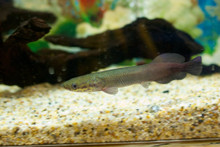
Recourses:
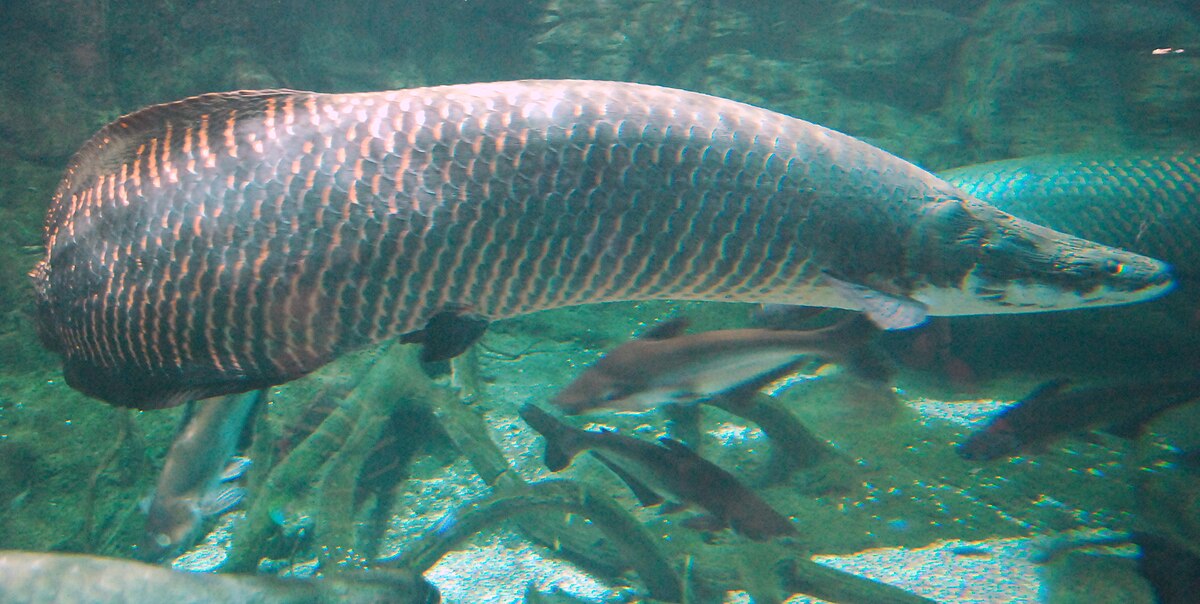
 en.wikipedia.org
en.wikipedia.org

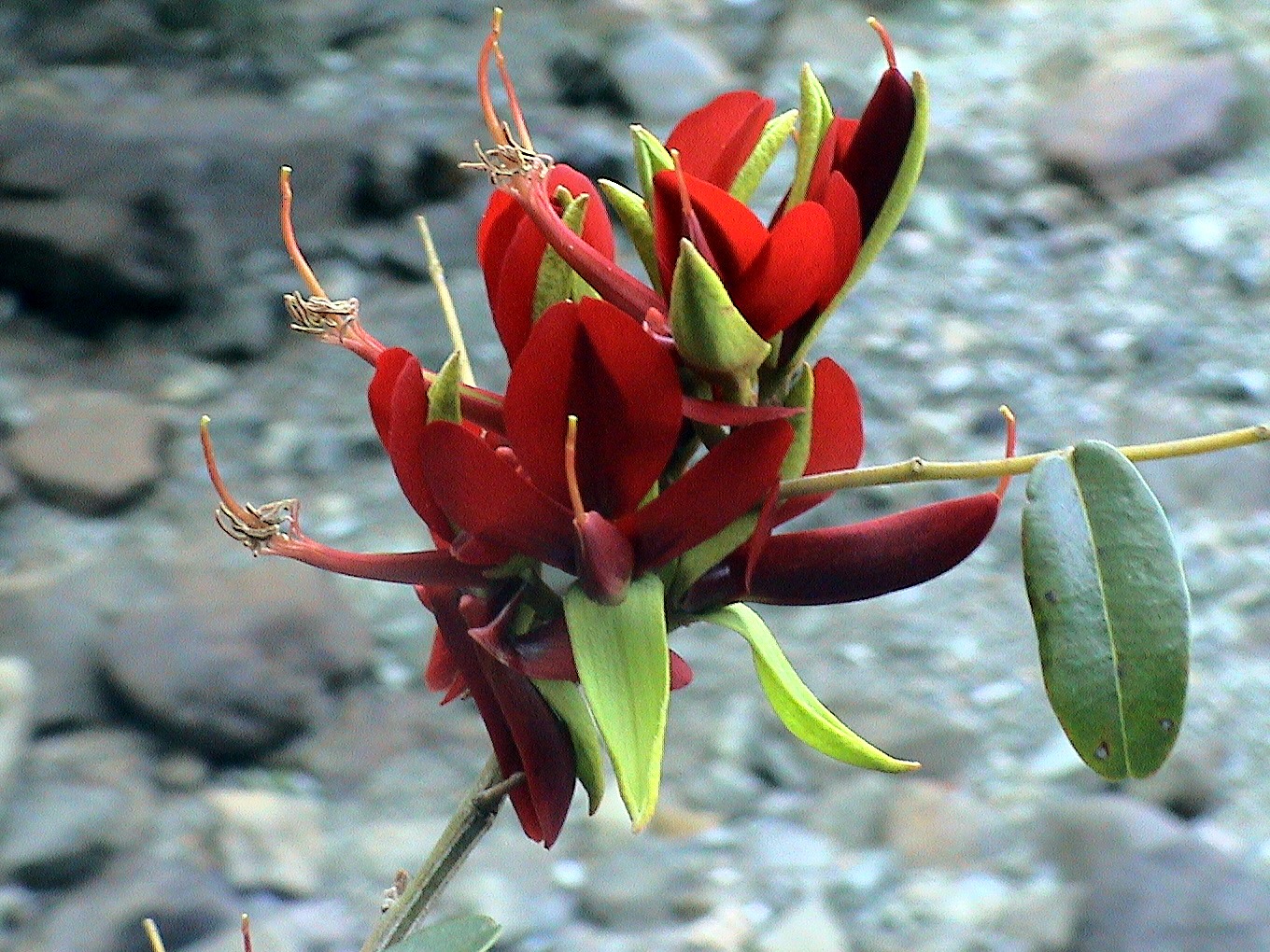
 www.iucnredlist.org
www.iucnredlist.org

 www.nationalgeographic.com
www.nationalgeographic.com
 www.fao.org
www.fao.org
Day #8 (11/12/21)
Aripaima (Pirarucu)
Aripaima gigas
Size: Doesn’t normally exceed 7 feet in captivity
pH: 6.0-6.7
Tank size (in gallons): pffffff take a guess!
Country of origin: Bolivia, Brazil, Guyana, Peru. However, in Bolivia, they are considered an invasive species
Diet: Will accept frozen, can be weaned on pellets (but don’t count on it). They are fish eaters and should be fed a large amount of fish.
Temperament: Peaceful to fish not able to fit in its mouth
Nitrate: <30ppm
Salinity: N/A
Fished for: Yes
Status: Data Deficiency - last assessed in 1996
Harmful to humans: Harmless (unless hungry
Description:
Originally thought to be the only species in its genus, aripaima gigas is a true River monster. They normally reside in the Amazon River Basin. There are 5 species of Aripaima, only 2 of which are kept. These fish need to be kept on a diet of frozen fish. Some states need permits to keep such fish.
Where you can find them:
As always, aqua-imports has them. Specialty saltwater stores may have them, but those will be collected in fully saltwater or high brackish areas.

Recourses:

Arapaima gigas - Wikipedia

Arapaima gigas summary page
www.fishbase.se

The IUCN Red List of Threatened Species
Established in 1964, the IUCN Red List of Threatened Species has evolved to become the world’s most comprehensive information source on the global conservation status of animal, fungi and plant species.

Arapaima, facts and photos
FAO Fisheries & Aquaculture
This may not be a very rare or odd fish, but I like this fish and I would want to keep one at a point in time. Sorry my fish profiles have decreased in quality. Haven’t had much time.
Paradise Fish
Macropodus opercularis

Size: normally not more than 2”
pH: any. These fish are very hardy. Normally in between 6.5-8.2
Tank size (in gallons): pffffff take a guess!
Country of origin: East Asia. Found in cold and warm water with dense vegetation. Commonly found in rice fields.
Diet: Frozen mosquito larvae, brine shrimp, and can be fed commercial flakes
Temperament: Males are aggressive
Nitrate: <30ppm
Salinity: Some reports of paradise fish in slightly brackish water.
Fished for: No
Status: Least Concern
Harmful to humans: Harmless
Description:
These fish are quite common in the aquarium trade. They can be found in cold and hot water. Ponds and tanks. They need/enjoy plants. Males are aggressive. There is an albino variant. These fish are very helpful to humans, because they eat mosquito larvae. In Taiwan, there habitat is being destroyed, and infection of Dengue Fever and Yellow Fever have gone up. These fish are very very hardy.
Where to find them:
Most pond shops will have them
Recourses:
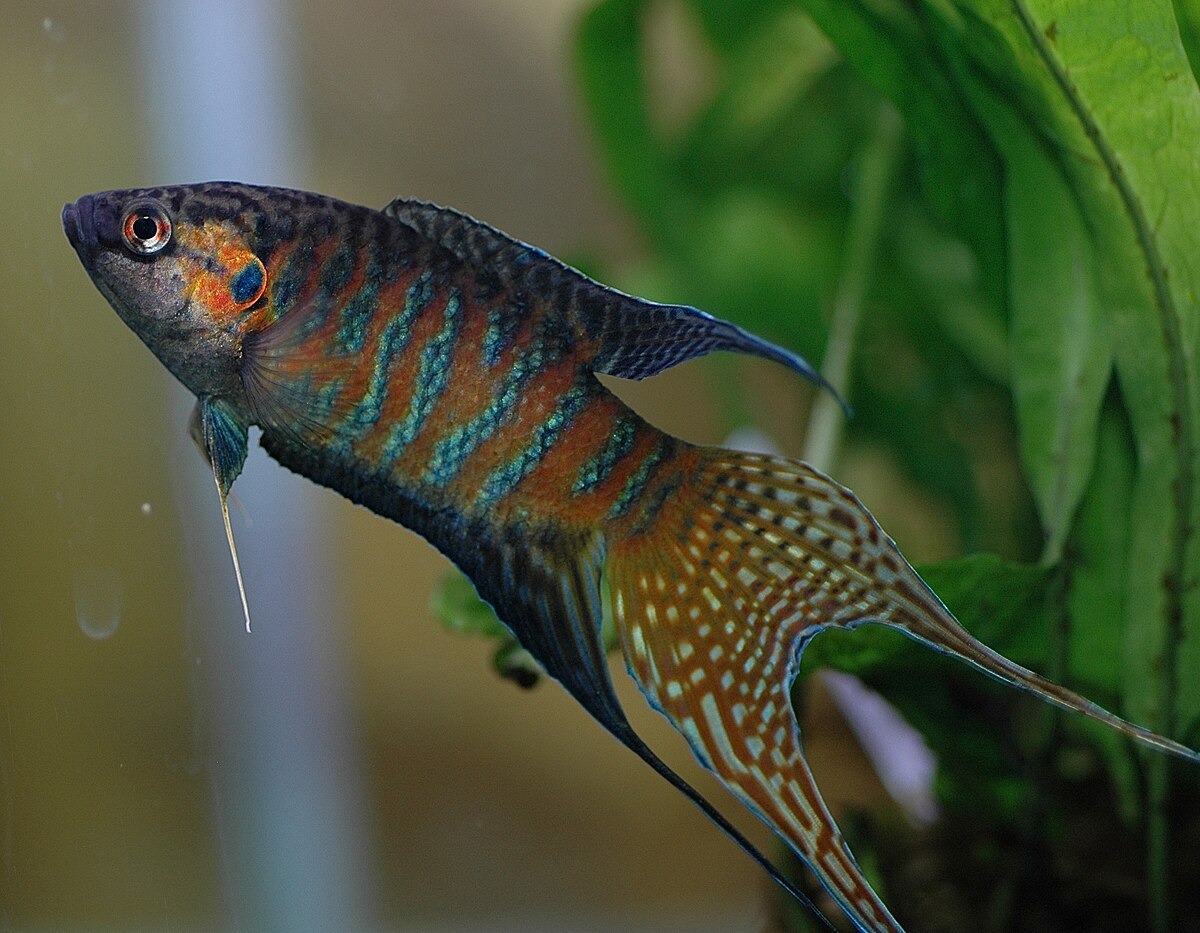
 en.wikipedia.org
en.wikipedia.org

 www.aquariumfishsale.com
www.aquariumfishsale.com

Paradise Fish
Macropodus opercularis
Size: normally not more than 2”
pH: any. These fish are very hardy. Normally in between 6.5-8.2
Tank size (in gallons): pffffff take a guess!
Country of origin: East Asia. Found in cold and warm water with dense vegetation. Commonly found in rice fields.
Diet: Frozen mosquito larvae, brine shrimp, and can be fed commercial flakes
Temperament: Males are aggressive
Nitrate: <30ppm
Salinity: Some reports of paradise fish in slightly brackish water.
Fished for: No
Status: Least Concern
Harmful to humans: Harmless
Description:
These fish are quite common in the aquarium trade. They can be found in cold and hot water. Ponds and tanks. They need/enjoy plants. Males are aggressive. There is an albino variant. These fish are very helpful to humans, because they eat mosquito larvae. In Taiwan, there habitat is being destroyed, and infection of Dengue Fever and Yellow Fever have gone up. These fish are very very hardy.
Where to find them:
Most pond shops will have them
Recourses:

Paradise fish - Wikipedia

Paradise Fish for sale
The paradise fish is one of the original aquarium fish. These fish were first imported from Vietnam to France for display in aquariums in 1869! The person responsible is early aquarium pioneer Pierre Carbonnier. Obviously these are hardy fish to ship by ocean from Vietnam to France.

Macropodus opercularis summary page
www.fishbase.se
Attachments
I love how you described it! Speaking of that fish take a look at this video:@itiwhetu ‘s guess was quite close. But it was not that fish. This is a true monster fish that I don’t expect anybody to keep besides people who want to spend 100’s of thousands of dollars on fish. Ladies and gentlemen and everybody in between, I present to you, the Aripaima Gigas!
Day #8 (11/12/21)
Aripaima (Pirarucu)
Aripaima gigas
View attachment 147757
Size: Doesn’t normally exceed 7 feet in captivity
pH: 6.0-6.7
Tank size (in gallons): pffffff take a guess!
Country of origin: Bolivia, Brazil, Guyana, Peru. However, in Bolivia, they are considered an invasive species
Diet: Will accept frozen, can be weaned on pellets (but don’t count on it). They are fish eaters and should be fed a large amount of fish.
Temperament: Peaceful to fish not able to fit in its mouth
Nitrate: <30ppm
Salinity: N/A
Fished for: Yes
Status: Data Deficiency - last assessed in 1996
Harmful to humans: Harmless (unless hungry)
Description:
Originally thought to be the only species in its genus, aripaima gigas is a true River monster. They normally reside in the Amazon River Basin. There are 5 species of Aripaima, only 2 of which are kept. These fish need to be kept on a diet of frozen fish. Some states need permits to keep such fish.
Where you can find them:
As always, aqua-imports has them. Specialty saltwater stores may have them, but those will be collected in fully saltwater or high brackish areas.

Recourses:

Arapaima gigas - Wikipedia
en.wikipedia.org

Arapaima gigas summary page
www.fishbase.se[/URL]
The IUCN Red List of Threatened Species
Established in 1964, the IUCN Red List of Threatened Species has evolved to become the world’s most comprehensive information source on the global conservation status of animal, fungi and plant species.www.iucnredlist.org
FAO Fisheries & Aquaculture
www.fao.org
I thought about doing paradise fish but I wasnt sure...This may not be a very rare or odd fish, but I like this fish and I would want to keep one at a point in time. Sorry my fish profiles have decreased in quality. Haven’t had much time.
Paradise Fish
Macropodus opercularis
View attachment 147759
Size: normally not more than 2”
pH: any. These fish are very hardy. Normally in between 6.5-8.2
Tank size (in gallons): pffffff take a guess!
Country of origin: East Asia. Found in cold and warm water with dense vegetation. Commonly found in rice fields.
Diet: Frozen mosquito larvae, brine shrimp, and can be fed commercial flakes
Temperament: Males are aggressive
Nitrate: <30ppm
Salinity: Some reports of paradise fish in slightly brackish water.
Fished for: No
Status: Least Concern
Harmful to humans: Harmless
Description:
These fish are quite common in the aquarium trade. They can be found in cold and hot water. Ponds and tanks. They need/enjoy plants. Males are aggressive. There is an albino variant. These fish are very helpful to humans, because they eat mosquito larvae. In Taiwan, there habitat is being destroyed, and infection of Dengue Fever and Yellow Fever have gone up. These fish are very very hardy.
Where to find them:
Most pond shops will have them
Recourses:

Paradise fish - Wikipedia
en.wikipedia.org

Paradise Fish for sale
The paradise fish is one of the original aquarium fish. These fish were first imported from Vietnam to France for display in aquariums in 1869! The person responsible is early aquarium pioneer Pierre Carbonnier. Obviously these are hardy fish to ship by ocean from Vietnam to France.www.aquariumfishsale.com

Macropodus opercularis summary page
www.fishbase.se
Similar threads
- Replies
- 59
- Views
- 11K
- Replies
- 3
- Views
- 5K
- Replies
- 11
- Views
- 19K


